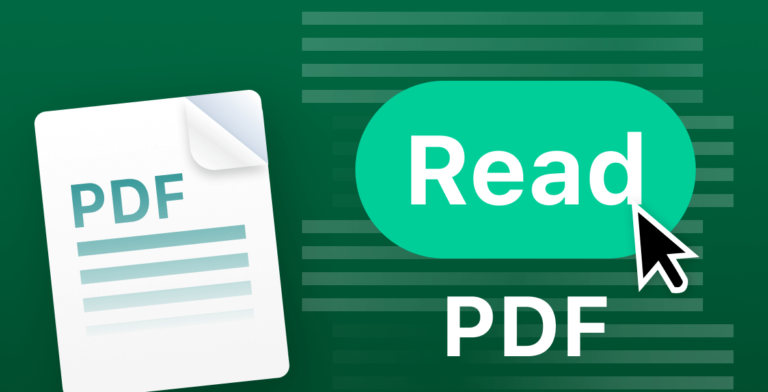Merging PDFs for Better Organization and Accessibility

Understanding the need for merging PDFs
In today’s digital age, PDF (Portable Document Format) files have become a standard format for sharing and storing various types of documents. However, as the number of PDF files grows, managing them efficiently can become a challenge. This is where merging PDFs comes into play, offering a solution for better organization and accessibility of documents.
Challenges of managing multiple PDF files
Managing multiple PDF files individually can be time-consuming and cumbersome. Each file may have its own title, metadata, and location, making it difficult to locate specific documents when needed. Additionally, organizing related files that belong together can be daunting, especially if they are scattered across different folders or devices.
Benefits of merging PDFs for streamlined organization
Merging PDFs provides numerous benefits for streamlining organization. You can create a cohesive and comprehensive resource by combining multiple PDF files into a single document. This consolidation simplifies document management, reduces clutter, and minimizes the chances of misplacing important files. Moreover, merging PDFs facilitates sharing and distribution, as you can conveniently share a single merged file instead of multiple individual documents.
Different methods and tools for merging PDFs
Manual methods of merging PDFs
Before the advent of specialized tools, merging PDFs could be done manually, albeit with limitations. Users had to open each PDF file, copy its contents, and paste them into a new document. While feasible for a small number of files, this method quickly becomes impractical when dealing with numerous documents.
Introduction to PDF merging software and online tools
In the present day, there is a diverse array of PDF merging software and online tools accessible, offering effective solutions for merging PDFs. Tools like Lumin, a PDF editor, provide user-friendly interfaces and robust functionalities that streamline the merging process. These tools eliminate manual copying and pasting, enabling users to quickly and easily merge multiple PDF files.
Preparing the PDF files for merging
Before merging PDFs, gathering the files you want to combine is essential. Ensure that the files are accessible and organized in a single folder for convenience. This preparation step saves time and prevents errors during the merging process.
Using a PDF merging tool or software
Once the PDF files are ready, open the chosen PDF merging tool or software. Select the option to merge or combine PDF files. In the interface, you can typically drag and drop the files into a designated area or use a file selection dialog to choose the files you wish to merge.
Adjusting the order and arrangement of merged PDFs
After selecting the files, you may need to adjust the order and arrangement of the merged PDFs. Most merging tools allow you to rearrange the files by simply dragging and dropping them into the desired sequence. This feature is useful when merging documents that follow a specific order or when combining chapters of a book.
Saving the merged PDF file
After finalizing the order, you can proceed to combine the PDF files. Use a merging tool or software to handle the files and create a unified PDF document. Select a suitable destination on your computer or device to save the merged file and pick an appropriate filename. Lastly, finish the process by clicking the “Save” or “Merge” button.
Advanced features and options for merging PDFs
Merging specific pages or page ranges
PDF merging tools often offer advanced features to merge specific pages or page ranges from multiple documents. This functionality is valuable when you need to extract specific sections from different PDFs and combine them into a new document, eliminating the need to merge entire files.
Adding watermarks, headers, or footers to merged PDFs
Some tools allow you to add watermarks, headers, or footers to enhance the merged PDF further. Watermarks can be used to brand or indicate the document’s status, while headers and footers can provide information such as page numbers, document titles, or dates. These additions contribute to the professionalism and clarity of the merged document.
Encrypting or password-protecting merged PDFs
When dealing with sensitive or confidential information, it is important to safeguard the merged PDF. PDF merging tools often provide options to encrypt or password-protect the document, ensuring that only authorized individuals can access its contents. This security measure adds an extra layer of protection to the merged document.
Tips for ensuring accessibility of merged PDFs
Properly tagging and labeling merged PDFs for screen readers
When merging PDFs, it is crucial to ensure accessibility for individuals who rely on screen readers or assistive technologies. Properly tagging and labeling the merged PDFs with headings, paragraphs, lists, and alternative text for images enhances their accessibility. PDF editing software and tools often provide options to add these accessibility features during the merging process.
Optimizing file size and compatibility for different devices
Merged PDFs can sometimes result in large file sizes, which may cause issues when sharing or viewing on different devices. To address this, consider using a PDF compression tool or feature to reduce the file size while preserving the document’s quality. This optimization ensures compatibility across various devices and facilitates efficient sharing and distribution. To sum up, merging PDFs provides a practical way to enhance document organization and accessibility. By consolidating multiple PDF files into a single document, individuals can save time, minimize clutter, and facilitate sharing. Thanks to user-friendly PDF merging software and online tools, the process has become even more convenient. By following a step-by-step guide and leveraging advanced features, users can effortlessly create well-organized, secure, and easily accessible merged PDFs.






